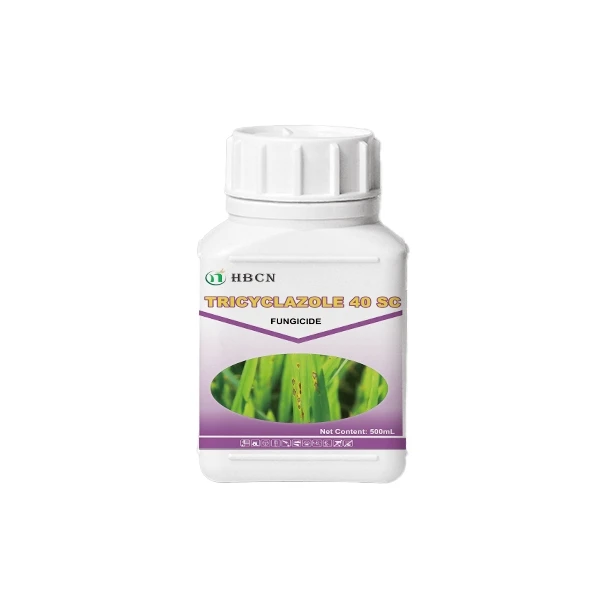
Dec . 09, 2024 21:51 Back to list
Chlorothalonil 82.5% DF Suppliers and Manufacturers Information and Product Details
The Importance of Chlorothalonil 82.5% DF in Agricultural Practices
Chlorothalonil, a broad-spectrum fungicide, has long been a vital tool in the management of fungal diseases affecting a wide variety of crops. Its formulation as a 82.5% dry flowable (DF) product has made it a popular choice among farmers and agricultural professionals worldwide. This article explores the significance of Chlorothalonil 82.5% DF, its applications, benefits, and considerations for its use in modern agriculture.
Understanding Chlorothalonil
Chlorothalonil belongs to the class of chemicals known as chloronitriles. It is especially effective against a range of fungal pathogens, including those that cause leaf spot, blight, and mildew. Its mode of action involves disrupting cellular processes in fungi, leading to cell death. This fungicide is commonly used on various crops, including vegetables, fruits, and ornamental plants.
Formulation and Application
The 82.5% DF formulation of Chlorothalonil provides a high concentration of the active ingredient, making it effective while being easy to apply. The dry flowable form is advantageous because it reduces dust during application, minimizing inhalation risks for applicators and ensuring efficient coverage on target plants. Farmers often utilize this formulation in combination with water to create a suspension that can be easily sprayed onto crops.
Applications of Chlorothalonil extend to a wide range of agricultural practices. In vegetable production, it is frequently used to combat diseases like bacterial blight in tomatoes and cucumbers, while fruit growers rely on it to protect crops such as strawberries and grapes from damaging fungal infections. The versatility of Chlorothalonil enables it to be integrated into diverse crop management systems, making it a staple for growers across various regions.
Benefits of Using Chlorothalonil 82
.5% DFOne of the primary benefits of Chlorothalonil 82.5% DF is its efficacy in preventing and managing fungal diseases, which can result in significant crop losses if left unchecked. By utilizing this fungicide, farmers can protect their yields, thereby ensuring food security and maintaining the economic viability of their operations. Additionally, Chlorothalonil has a relatively low toxicity profile for humans and wildlife when used according to label instructions, making it a safer choice compared to some other fungicides.
chlorothalonil 82.5 df manufacturers

Another advantage is Chlorothalonil’s ability to provide long-lasting protection. This means that growers can reduce the frequency of applications while still achieving effective disease control. Furthermore, its broad-spectrum activity allows for fewer product switches during the growing season, simplifying pest management practices.
Resistance Management
The use of fungicides like Chlorothalonil is critical in integrated pest management (IPM) strategies. However, the potential development of resistance among fungal populations is a growing concern among agronomists and crop protection specialists. To mitigate this risk, it is essential for growers to employ resistance management strategies, such as rotating Chlorothalonil with fungicides that have different modes of action. This approach helps maintain the effectiveness of the product over time and reduces the likelihood of resistant strains emerging.
Environmental Considerations
While Chlorothalonil is an effective fungicide, its use must also be balanced with environmental considerations. Proper application techniques can minimize runoff and protect non-target species. Growers should always adhere to recommended application rates and timing to mitigate any potential negative impacts on surrounding ecosystems.
Moreover, continuous research and monitoring are necessary to assess the environmental fate of Chlorothalonil. As awareness of ecological sustainability grows, it is imperative for manufacturers and users alike to focus on responsible usage practices that prioritize crop health while safeguarding environmental integrity.
Conclusion
Chlorothalonil 82.5% DF plays a critical role in the agricultural landscape by providing effective control against a wide range of fungal diseases. Its high concentration, ease of application, and long-lasting effects make it a go-to choice for farmers aiming to boost crop production and ensure food quality. However, with the benefits come responsibilities, including the need for effective resistance management and environmental stewardship. By navigating these challenges, the agricultural community can continue to harness the power of Chlorothalonil to support sustainable food production for future generations.
-
Emamectin Benzoate: AI-Optimized Pest Control Solution
NewsAug.01,2025
-
Best Abamectin 95% | Top Pesticide for Crop Protection
NewsJul.31,2025
-
Insecticide Spirotetramat 11% + Thiacloprid 11% SC at Good Price
NewsJul.30,2025
-
Best Abamectin SDS - Premium Quality & Reliable Safety Data
NewsJul.29,2025
-
Agrochemicals Pesticides Solutions for Sustainable Farming
NewsJul.29,2025
-
High-Quality Tebuconazole Fungicide for Crop Protection at Best Price
NewsJul.29,2025
